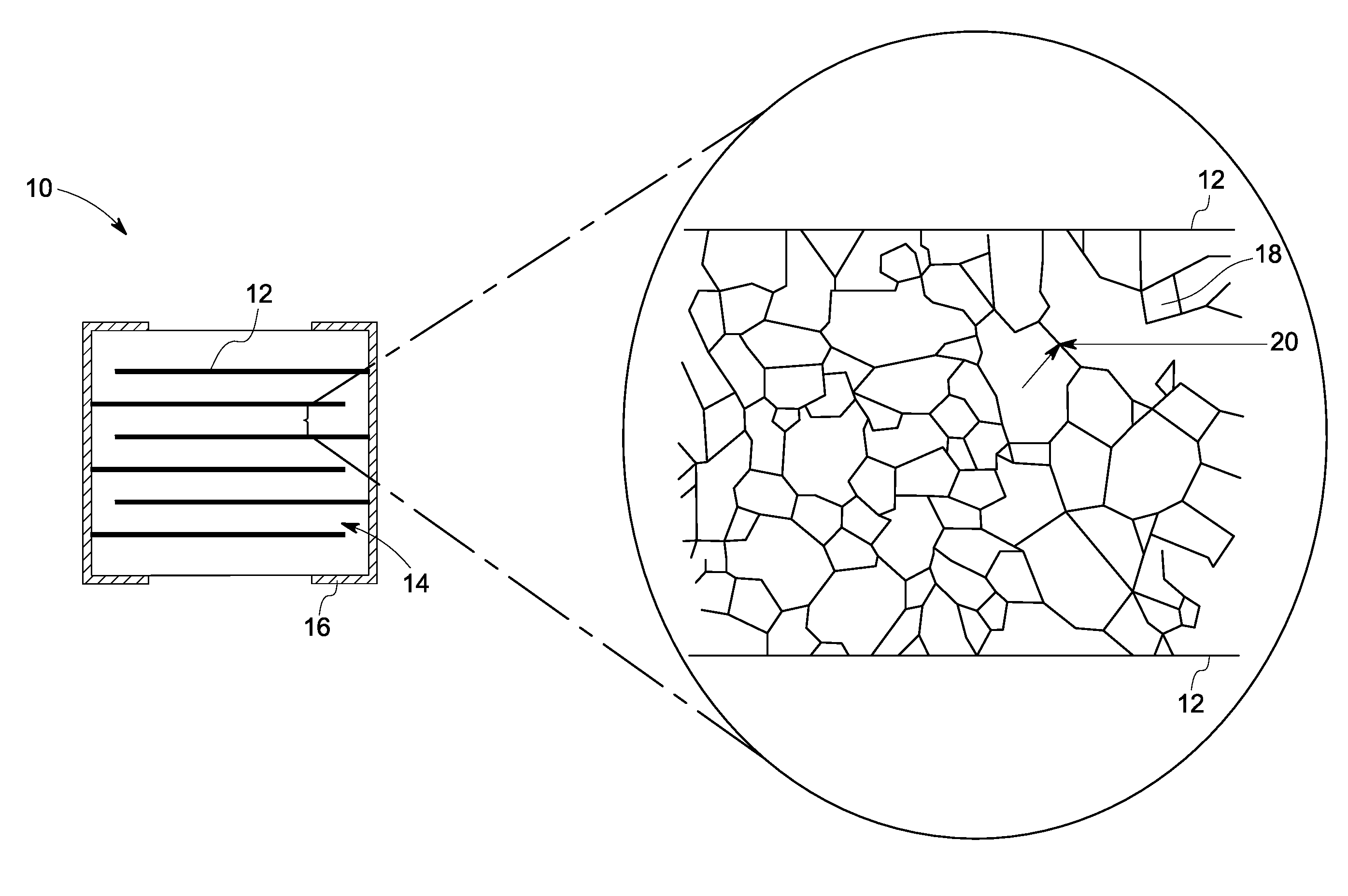Electronic device and method
a technology of electronic devices and methods, applied in the direction of basic electric elements, electrical equipment, conductive materials, etc., can solve the problems of inability to meet the needs of the user, etc., and achieve the effect of reducing the number of devices
- Summary
- Abstract
- Description
- Claims
- Application Information
AI Technical Summary
Benefits of technology
Problems solved by technology
Method used
Image
Examples
example 1
[0071]The transition metal oxide and the additives are weighed to provide a powder mixture as in sample 1. The powder mixture of sample 1 is mixed using a ball mill along with a volatile film-forming polymer binder (polyvinyl alcohol and polyethylene glycol) and solvent (deionized water) to form a ceramic mixture paste. The ceramic mixture is pressed into a green body and the ceramic paste is dispersed onto a smooth surface of a rigid substrate (polyethylene terephthalate) with a release agent. The dispersion is heated to a temperature in a range from about 60 degrees Celsius to about 80 degrees Celsius in order to remove the solvent to form ceramic tapes. Silver paste is screen printed on to the green body and the semi-dry ceramic tapes in a given pattern. The printing is repeated on seven semi-dry ceramic tapes as mentioned above. The tapes are then punched, via filled and stacked together. The printed tapes are laminated with interleaved silver electrodes. The silver printed inte...
example 2
[0072]The transition metal oxide and the additives are weighed to provide a powder mixture as in sample 6. The procedure similar to that described above is employed to make the varistor that includes the sintered mass of sample 6.
example 3
[0073]The transition metal oxide and the additives are weighed to provide a powder mixture as in sample 12. The procedure similar to that described above is employed to make the varistor that includes the sintered mass of sample 12.
Current-Voltage (I-V) Measurement:
[0074]A 10 kiloOhm or 100 MegaOhm resistor 64 is connected in parallel to the varistor 62 and a voltage is applied. V1, the total voltage on sample 66 and varistor is measured using a high voltage probe. V2, the voltage on the resistor is measured by a multimeter. V2 is used to calculate the current flowing through the varistor as given in FIG. 3. V1-V2 is the voltage on the Samples 1-6. To measure I-V curve, at low voltage, a 100 MOhm resistor is used until the voltage on it is higher than about 100 Volts. A 10 kilo Ohm resistor is used to measure the I-V curve under high voltage (higher than about 100 Volts).
[0075]FIG. 4 shows the results of metal oxide varistor materials of Samples 1-3 relative to a commercially availa...
PUM
| Property | Measurement | Unit |
|---|---|---|
| temperature | aaaaa | aaaaa |
| temperature | aaaaa | aaaaa |
| melting point | aaaaa | aaaaa |
Abstract
Description
Claims
Application Information
 Login to View More
Login to View More - R&D
- Intellectual Property
- Life Sciences
- Materials
- Tech Scout
- Unparalleled Data Quality
- Higher Quality Content
- 60% Fewer Hallucinations
Browse by: Latest US Patents, China's latest patents, Technical Efficacy Thesaurus, Application Domain, Technology Topic, Popular Technical Reports.
© 2025 PatSnap. All rights reserved.Legal|Privacy policy|Modern Slavery Act Transparency Statement|Sitemap|About US| Contact US: help@patsnap.com



